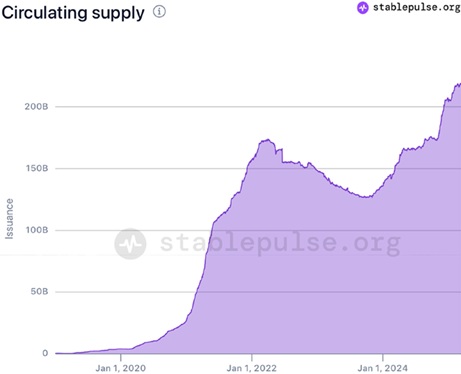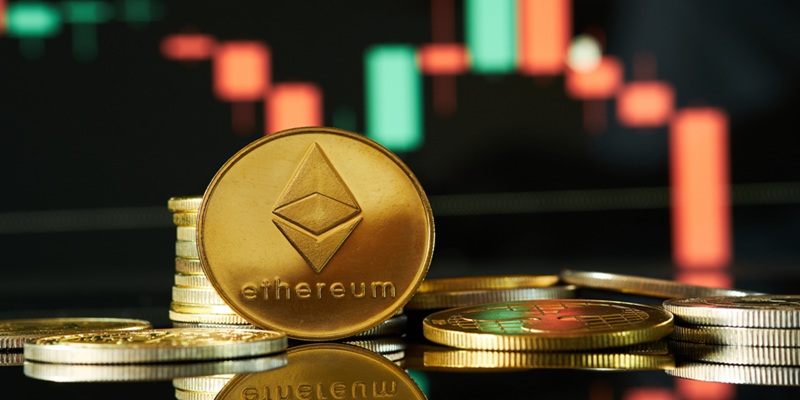Are you ready for the Circle IPO?
The “stablecoin” giant just filed to go public. It’s aiming for a valuation between $4 billion and $5 billion and plans to list on the NYSE as early as June under the ticker CRCL.
It will be the biggest crypto IPO since Coinbase (COIN) went public back in 2021.
Circle is the company behind USD Coin (USDC)— the world’s second-biggest stablecoin. I’ll share my favorite way to profit from the rise of stablecoins in a minute.
First, let me quickly break down what stablecoins are and why they’re a huge disruption to the traditional banking system.
- A stablecoin is a cryptocurrency worth exactly one US dollar.
Technically, a stablecoin can be worth exactly one unit of any currency. Euro stablecoins exist, but they’re insignificant.
US dollar stablecoins are extremely significant. They’re as good as US dollars, and they can be transferred anywhere around the world in mere seconds. 24/7/365.
No banks. No waiting. No Western Union (WU). No middlemen or the costs and delays associated with them. Stablecoins are the only way to send $10,000 to a friend halfway around the world in seconds, from your phone, for less than a penny.
USDC alone processes $300 billion worth of transactions—each month. In fact:
- Stablecoins now process more transactions than Visa (V) and Mastercard (MA) combined!
Back in January 2023, I predicted stablecoin volumes would eventually eclipse each payment giant.
$2.76 trillion worth of stablecoins changed hands last year.
And over the past five years, the number of stablecoins in circulation has soared from $4 billion to $230 billion:

Source: stablepulse.org
There are now more stablecoins than physical Canadian dollars or British pounds in circulation.
Unique stablecoin accounts have jumped 50% in the last year alone.
And 40% of all blockchain transactions are now stablecoin transfers.
The numbers speak for themselves.
- Some critics claim stablecoins threaten the US dollar’s reserve currency status.
It’s the opposite: Stablecoins cement the US dollar’s dominance.
The companies issuing stablecoins back them with US Treasuries at a 1:1 ratio. For every $1 of stablecoins issued, the issuer holds $1 in US bonds.
That’s why Tether (USDT), the largest stablecoin issuer, is the seventh-largest holder of US Treasuries. It holds more US Treasuries than Mexico or Germany.
|
Stablecoins are digitizing and globalizing the dollar. They’re expanding USD’s reach even further, into markets where banking infrastructure is limited.
Now, digital dollars are transitioning from the fringe corner of the crypto universe. They’re getting embedded into the mainstream financial system.
Fintech giant Stripe recently acquired stablecoin platform Bridge for $1.1 billion. In its annual report, Stripe called stablecoins “room-temperature superconductors for financial services.”
Room-temperature superconductors are considered a holy grail in chip technology. By removing all friction and costs from sending dollars, stablecoins are acting as a holy grail financial technology.
- Not too long ago, Bank of America (BAC) was closing the accounts of crypto entrepreneurs.
Now, it’s preparing to issue its own stablecoin.
Elon Musk’s SpaceX uses stablecoins to collect profits from selling Starlink satellites overseas. This will become common practice for most US companies soon.
Meanwhile, Congress is working on stablecoin and market structure bills. These will give crypto all-important regulatory clarity. President Trump has expressed a desire to sign both bills into law by August 2025.
This might be the biggest financial shift no one’s paying attention to. Circle’s IPO could be the moment everyone wakes up to it.
- Here’s a picks-and-shovels way to profit from the rise of stablecoins.
You can’t directly make money by buying stablecoins because their prices don’t move.
But you can still profit from their rise.
Roughly $80 billion worth of stablecoins change hands each day.
Over 60% of these transactions happen on Ethereum (ETH) and Ethereum Layer 2 networks like Base and Arbitrum.
If stablecoins are the equivalent of a bank, Ethereum is the SWIFT payment network.
Each time someone uses Ethereum’s blockchain, they pay a fee for using the network.
Last month, fees from stablecoin transactions generated more than $2 million in revenue for Ethereum.
As stablecoin volumes continue their steady march higher, expect revenue from fees to surge. That’s great for Ethereum and Ethereum holders.
Right now, ETH is beaten down and unloved.
Crypto got sucked into the global macro trade. It’s moving in lockstep with the stock market, which is under pressure as investors grapple with uncertainty around tariffs.
The macro uncertainty cut the price of ETH in half.
This is your chance to buy ETH at a discount before Wall Street wakes up to the potential of stablecoins.
Stephen McBride
Chief Analyst, RiskHedge



